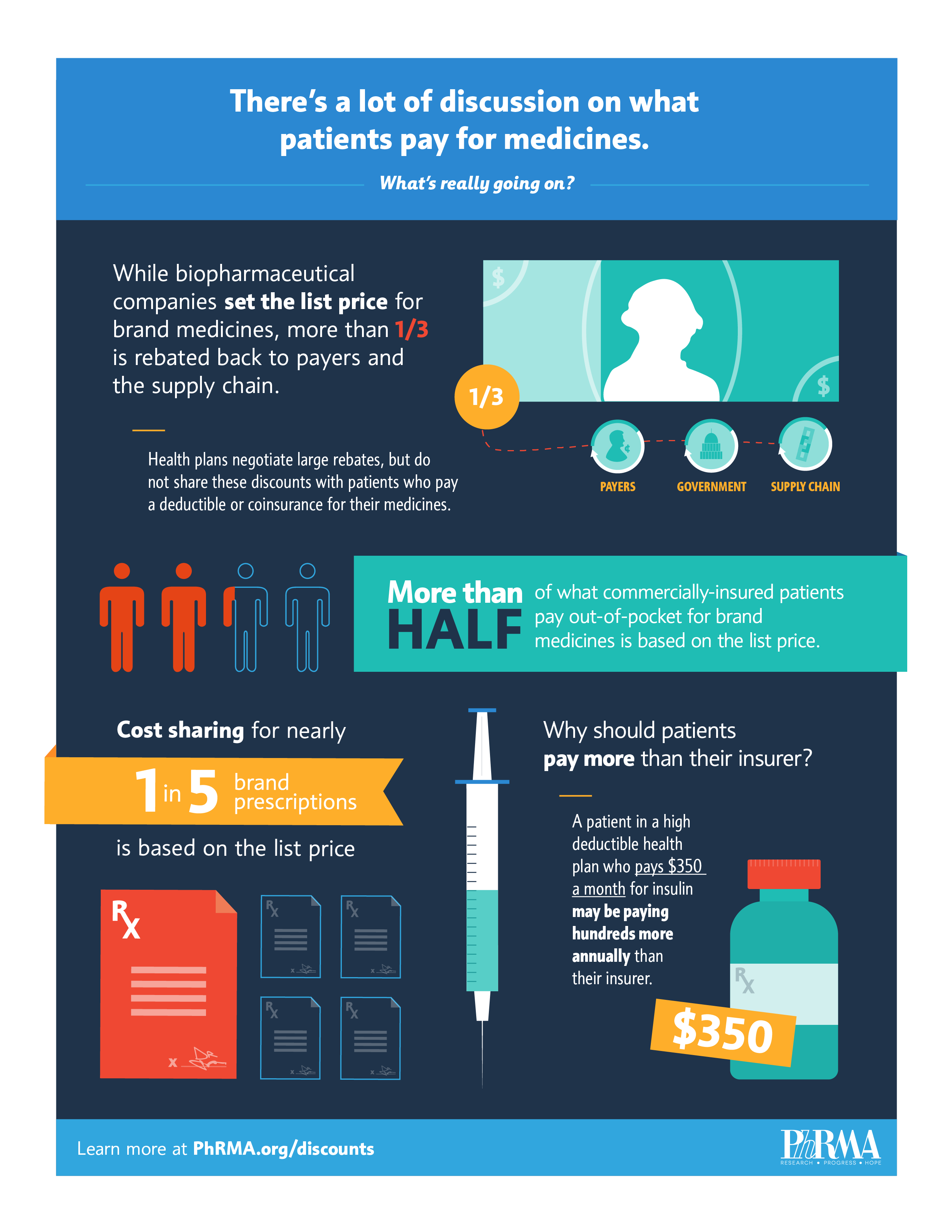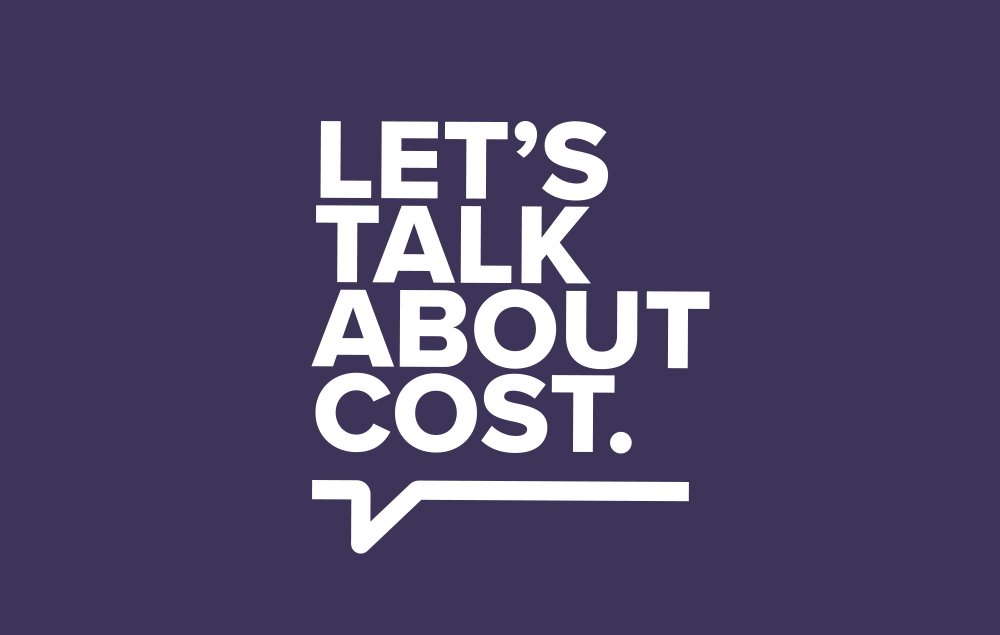More than half of commercially insured patients’ out-of-pocket spending for brand medicines is based on full list prices, according to a new analysis from Amundsen Consulting, a division of QuintilesIMS. Even though rebates paid by biopharmaceutical companies can substantially reduce the prices insurers and pharmacy benefit managers (PBMs) pay for brand medicines, insurers use list prices—rather than discounted prices—to determine how much to charge patients with deductibles and coinsurance. The newly released data show cost sharing for nearly one in five brand prescriptions filled in the commercial market is based on the list price.
Robust negotiations between biopharmaceutical companies and health plans result in significant rebates and discounts. According to a recent study from the Berkeley Research Group, more than a third of the list price for brand medicines is rebated back to payers and the supply chain. Private payers are also reportedly receiving rebates of between 30 percent and 55 percent for medicines to treat a number of conditions, including diabetes, asthma, high cholesterol and hepatitis C.
Unlike care received at an in-network hospital or physician’s office, negotiated discounts for medicines are not shared with patients with high deductibles or coinsurance. Providing access to discounted prices at the point-of-sale could dramatically lower patients’ out-of-pocket costs. For example, a patient in a high-deductible health plan who pays $350 each month for insulin, an amount calculated based on the list price of the medicine, may be paying hundreds—or even thousands—more annually than their insurer.
Patients with high deductibles or coinsurance are less likely to take medicines as prescribed, putting them at higher risk for expensive emergency room visits, avoidable hospitalizations and poorer health outcomes. The Amundsen Consulting analysis found prescriptions subject to a deductible were more than twice as likely to be abandoned at the pharmacy, meaning they were cancelled or never picked up by the patient.
Ensuring patients have access to the medicines they need is the top priority for America’s biopharmaceutical industry. We need to make sure insurance benefits encourage and promote health – not prevent patients from accessing health care treatments. Copay coupon programs offered by biopharmaceutical companies can provide a valuable source of assistance for many commercially insured patients to afford out-of-pocket costs associated with insurance coverage for their medications.
In many respects, our current marketplace for medicines works for patients, but basing deductibles and coinsurance for medicines on undiscounted list prices unfairly penalizes sick patients with high spending.
Payers also recognize that asking patients to pay cost sharing based on undiscounted list prices can be problematic and that passing along discounts and rebates to patients should be considered as a “best practice.”
Read the full analysis here.




